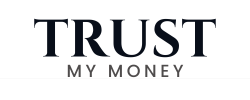Advertisement
A growing number of Americans are embracing the FIRE retirement strategy to achieve financial independence and retire early.
Did you know that nearly 1 in 5 millennials plans to retire before age 60? The Financial Independence, Retire Early (FIRE) movement has gained momentum as a viable path to financial freedom.
By adopting a disciplined approach to saving and investing, individuals can join the ranks of those who have achieved financial independence and retired early.
This introductory section will explore the principles of the FIRE movement and the benefits of adopting this lifestyle. It will provide a roadmap for those seeking to retire early.
What is the FIRE Retirement Strategy?
Early retirement planning is now more popular thanks to the Financial Independence, Retire Early (FIRE) movement. This plan aims to retire early, often decades before the usual age. It focuses on achieving financial freedom.
Definition of FIRE
The FIRE movement seeks financial independence through saving and investing aggressively. It involves cutting down on expenses and saving more. This helps people retire early.
At its heart, FIRE is about redefining retirement. It’s about living a life where you can follow your passions without a 9-to-5 job.
Brief History of the Movement
The FIRE movement started in the early 2000s. It gained more attention with books like “Your Money or Your Life” by Vicki Robin and Joe Dominguez. Online communities and blogs also played a big role in spreading the word.
Over time, the FIRE movement has grown to include different approaches. These include Lean FIRE, Fat FIRE, and Barista FIRE. Each one suits different lifestyles and financial goals. This shows how the FIRE community is diverse and adaptable.
Today, the FIRE movement draws people from all walks of life. They all share the dream of financial independence and early retirement. It’s not just about retiring early. It’s about living a life of financial freedom and purpose.
The Principles of FIRE
The FIRE movement focuses on three main ideas: financial independence, early retirement, and wealth building. These ideas work together to help people achieve financial freedom and retire early.
Financial Independence Defined
Financial independence is at the heart of FIRE. It means having enough money to live without a salary. This freedom lets people follow their dreams without money worries. As Vicki Robin, a key figure in FIRE, said, “It’s not just about money; it’s about freedom to choose.”
“The key to achieving financial independence is not just saving, but investing wisely to grow your wealth over time.”
The Importance of Early Retirement
Early retirement is a big part of FIRE. It means stopping work early, often in the 40s or 50s. This lets people enjoy their life and explore new interests. Retiring early needs careful planning and a strong financial base. A survey found that about 45% of FIRE followers aim to retire before 50.
Building Wealth Over Time
Building wealth takes time and involves saving, investing, and smart money management. It’s key for financial independence and early retirement. Investing in a diverse portfolio, like stocks, bonds, and real estate, is a smart move. As Warren Buffett, a famous investor, says, “Price is what you pay. Value is what you get.” This idea is crucial for growing wealth.
- Investing in index funds or ETFs for broad market exposure
- Utilizing tax-advantaged accounts to minimize tax liabilities
- Maintaining an emergency fund to cover unexpected expenses
By grasping and applying these principles, people can successfully follow the FIRE movement. They can reach their goals of financial independence.
Different Approaches to FIRE
The FIRE movement is diverse, with many strategies for achieving financial freedom. People can pick the approach that fits their goals and lifestyle. Each method aims to help you retire early and enjoy financial independence.
Lean FIRE vs. Fat FIRE
Lean FIRE and Fat FIRE are two main paths in the FIRE movement. Lean FIRE means living very simply to save money fast. Fat FIRE lets you enjoy a richer life, but you need more savings.
Deciding between Lean and Fat FIRE depends on what you value and your financial goals. Lean FIRE means strict budgeting, while Fat FIRE needs bigger savings. Both require planning but offer different retirement lifestyles.
Barista FIRE Explained
Barista FIRE is a middle path. It lets you work part-time while still saving for retirement. This option is great for those who like to work or need social interaction.
Barista FIRE is perfect for those who don’t want to fully retire early. It balances work and savings, offering flexibility and financial security.
Coast FIRE: An Alternative Path
Coast FIRE is a unique strategy. It involves saving a lot early and then coasting on those savings. This method reduces the need to save as much later in life.
Coast FIRE is attractive to those who save early and see their investments grow. It’s a relaxed way to reach financial independence, with the early savings doing most of the work.
The Importance of Budgeting
Effective budgeting is key to saving strategies that support the FIRE lifestyle. By managing your finances well, you can speed up your journey to financial freedom and early retirement.
Creating a Detailed Budget
To begin, making a detailed budget is crucial. It should list all your income and expenses. This means tracking every transaction, big or small, to see where your money goes.
- Identify fixed expenses like rent, utilities, and insurance.
- Track variable expenses such as groceries, entertainment, and travel.
- Remember to include periodic expenses, like car maintenance or property taxes.
Tracking Your Expenses
It’s important to track your expenses to understand your spending habits. This helps you find ways to save money. Budgeting apps or spreadsheets can make this easier.
- Use a budgeting app to categorize your expenses.
- Set spending limits for different categories.
- Regularly check your expenses to stay on track.
Adjusting Lifestyle Choices
Making lifestyle adjustments is often needed to meet your FIRE goals. This might mean downsizing, living more frugally, or finding cheaper ways to have fun.
- Consider downsizing your home or finding a roommate to split costs.
- Adopt a minimalist lifestyle to cut down on unnecessary buys.
- Look for free or low-cost hobbies and entertainment.
By using these budgeting strategies, those chasing the FIRE dream can reach their goals of financial freedom and early retirement.
Income Streams for FIRE
Multiple income streams are key to the FIRE retirement strategy. They help you reach financial independence and retire early. Diversifying your income makes your finances more stable.
Side Hustles and Freelancing
Side hustles and freelancing are great ways to earn more. They let you use your skills to make extra money. You can write, consult, or sell online.
Working a few hours a week on a side hustle can really help. It boosts your income and speeds up your path to financial freedom.
Freelancing sites like Upwork and Fiverr offer many chances to work for clients worldwide. You can do graphic design, programming, or digital marketing. Freelancing can add a lot to your income.
Passive Income Opportunities
Passive income is also important for FIRE. It includes things like dividend stocks, REITs, and digital products. These can make money without needing to work directly.
For example, dividend stocks give you regular income without much effort. REITs let you invest in real estate without managing it. This way, you get rental income.
Investments and Their Role
Investments are crucial for FIRE fans. They help grow your wealth and create more income. Index funds, ETFs, and stocks are good choices.
A diverse investment portfolio reduces risk and ensures steady income in retirement. It’s important to know your options and maybe talk to a financial advisor.
By mixing side hustles, freelancing, passive income, and smart investments, you build a strong financial base. This supports your early retirement goals and improves your early retirement planning.
Maximizing Savings Rates
Maximizing savings rates is key in the FIRE movement. It helps people reach financial independence faster. To do this, setting a realistic savings goal, automating savings, and cutting unnecessary expenses are crucial.
Setting a Savings Target
Starting with a clear savings goal is essential. You need to figure out how much you must save for financial freedom. Think about your retirement age, expected costs, and any income you’ll have then. A clear goal makes your savings plan focused.
Automating Savings
Automating your savings makes it easier. Set up automatic transfers to your savings or investments. This way, you save a set amount regularly, without effort. This builds a steady savings habit.

Cutting Unnecessary Expenses
Reducing unnecessary spending boosts your savings. Track your expenses to find where you can save. Cooking at home, canceling unused subscriptions, and lowering household costs help a lot. Every dollar saved is a dollar for your financial freedom.
Using these strategies can greatly improve your savings rate. This brings you closer to financial independence through the FIRE retirement strategy.
Investing Strategies for FIRE
Investing is key to the FIRE strategy. It helps build wealth over time. A diverse portfolio can reduce risks and boost chances for long-term financial freedom.
Index Funds and ETFs
Index funds and ETFs are top choices for FIRE seekers. They offer wide market exposure and diversification. Plus, they usually have lower fees than active funds. Investing in a total stock market index fund can tap into the market’s overall growth.
- Low expense ratios
- Diversification across various asset classes
- Passive management
Real Estate Investments
Real estate is a solid FIRE investment. It can bring in rental income and appreciate in value over time. But, it’s important to think about property management and market changes.
- Direct property investment
- Real estate investment trusts (REITs)
- Real estate crowdfunding
Stock Picking Basics
Stock picking is for those who like a hands-on approach. It means choosing stocks with growth potential. It’s vital to do thorough research and diversify to manage risk.
- Researching company financials
- Understanding market trends
- Diversifying your stock portfolio
By mixing these strategies, people can craft a strong plan for early retirement through FIRE. It’s important to match investments with personal goals and risk comfort.
The Role of Health Insurance
For those aiming for early retirement, knowing about health insurance is key. It helps protect against big medical bills. Without it, these costs can be overwhelming.
Understanding Health Care Costs
Healthcare in the U.S. can be very expensive. This includes doctor visits, hospital stays, and prescriptions. Early retirees need to think about these costs when planning their retirement.
Key components of healthcare costs include:
- Premiums for health insurance
- Out-of-pocket expenses like deductibles and copays
- Costs for prescription medications
Options for Early Retirees
Early retirees have a few health insurance choices. These include COBRA, Affordable Care Act (ACA) plans, and private insurance. Each has its own pros and cons, depending on your situation.
COBRA lets you keep your job’s health plan, but it’s pricey. ACA plans offer affordable coverage based on your income. Private insurance offers many choices but might not have the subsidies of ACA plans.
Navigating Medicare and Medicaid
When you turn 65, Medicare becomes an option. It’s important to understand Medicare’s different parts (A, B, C, D) and how they work together. Medicaid, based on income and assets, offers coverage to those who qualify.
Navigating these programs requires careful planning:
| Program | Eligibility | Coverage |
|---|---|---|
| Medicare | Ages 65+ | Hospital, medical, prescription |
| Medicaid | Low income/asset | Varies by state |
By understanding healthcare costs and exploring insurance options, FIRE community members can prepare for early retirement. This ensures they have the coverage needed to stay financially independent.
Tax Considerations for FIRE
When you aim for FIRE, knowing about taxes is key. It helps you make the most of your retirement savings. Planning your taxes is a big part of reaching financial freedom early.
Understanding Tax Brackets
Tax brackets are important for a good FIRE plan. Knowing how they work helps you save more money. It’s all about keeping your taxes low.
In the U.S., tax rates go up as your income does. Knowing this helps you choose the right investments and when to take them out.
| Tax Bracket | Income Range | Tax Rate |
|---|---|---|
| 10% | $0 – $9,875 | 10% |
| 12% | $9,876 – $40,125 | 12% |
| 22% | $40,126 – $80,250 | 22% |
Tax-Advantaged Accounts
Using tax-advantaged accounts is smart for FIRE. Accounts like 401(k), IRA, and Roth IRA offer tax breaks. These can help grow your retirement savings.
For example, putting money into a traditional 401(k) or IRA lowers your taxes for that year. But, Roth IRA contributions are made with money you’ve already paid taxes on. Yet, the money you take out later is tax-free under certain conditions.
Strategies to Minimize Taxes
It’s crucial to find ways to pay less in taxes. This includes selling losing investments to offset gains, moving traditional IRA money to Roth IRA, and planning when to take out money. These steps help keep more of your retirement savings.
Tax-loss harvesting is one way to do this. It means selling investments that have lost value. This can help lower your taxes by offsetting gains from other investments.
Key Strategies:
- Tax-loss harvesting
- Roth conversions
- Withdrawal planning
By understanding and using these tax tips, you can boost your chances of a successful FIRE. This leads to a more secure and early retirement.
Preparing for Unexpected Costs
The path to early retirement through FIRE is full of financial surprises. It’s key to plan for these surprises. Saving and investing are just the start; you also need a solid plan for unexpected expenses.
Building an Emergency Fund
Creating an emergency fund is a crucial step. This fund is your financial safety net. It helps cover unexpected costs without ruining your long-term plans. Aim to save three to six months’ worth of living expenses.
To grow this fund, set up automatic transfers from your checking to your savings. This way, you save regularly without having to remember.
Contingency Planning
Having an emergency fund is just the start. Contingency planning is also vital. It’s about spotting financial risks and finding ways to deal with them. For example, early retirement might mean higher healthcare costs, so plan for health insurance.
Also, be ready for market downturns if you invest. Spread out your investments to reduce risk. This way, you’re not too tied to one market or investment.
The Importance of Flexibility
Flexibility is key in the FIRE strategy. It lets you handle financial surprises without messing up your plans. This might mean adjusting your retirement date or being ready to go back to work.
Having a flexible budget is also crucial. Check your spending and income often to stay on track. Be ready to cut back or find ways to earn more if needed.
In summary, getting ready for unexpected costs is a big part of the FIRE strategy. With an emergency fund, contingency plans, and flexibility, you can handle the financial ups and downs of early retirement.
Creating a Withdrawal Strategy
A good withdrawal strategy is key to a successful FIRE retirement plan. When you retire early, it’s important to have a plan for taking money out of your savings. This helps keep your lifestyle the same and reaches your financial independence goals.
Safe Withdrawal Rate Explained
The safe withdrawal rate is a big part of your plan. It’s the percentage of your savings you can take out each year without running out of money in 30 years or more. The usual rate is 4%, but it can change based on the market and your finances.
For example, if you have $1 million, a 4% rate means you can take out $40,000 a year. But remember, this rate might not fit everyone. It depends on your spending and income in retirement.
Adjusting for Inflation
Inflation can lower your buying power over time. Your plan should account for this. You might need to increase your withdrawals by the inflation rate each year.
Let’s say you take out $40,000 in the first year and inflation is 3%. Then, in the second year, you’d take out $41,200. This keeps your retirement income up with the cost of living.
Planning for Market Downturns
Market downturns can hurt your savings. A good plan should cover these times. You might take out less money during downturns or have other income sources.
“The biggest challenge in retirement is not running out of money, but rather, not having enough income to support your lifestyle.” –
Knowing the safe withdrawal rate, adjusting for inflation, and planning for market downturns makes a strong plan. This plan supports your retire early lifestyle and helps you meet your financial goals.
The Psychological Aspects of FIRE
Reaching financial independence through FIRE is more than saving money. It’s about getting ready for a big change in lifestyle. When people retire early, they face the challenge of adjusting to this new phase.
Managing Lifestyle Changes
Adapting to a new life after early retirement can be tough. Many find it hard to find purpose without a daily job. It’s key to create new routines and hobbies that make you feel fulfilled.
Staying Motivated
Keeping motivated after retirement is vital for your mental health. Activities like exercise or volunteering can keep you engaged and connected. They help you stay motivated and involved in your community.
Building a Supportive Community
Being part of a FIRE community offers great support and connection. Online forums, local meetups, and social media groups are great places to share experiences. They make the early retirement transition easier.
Understanding the psychological side of FIRE and having a supportive community helps. It makes navigating early retirement’s challenges easier. And it leads to a more rewarding life after work.



